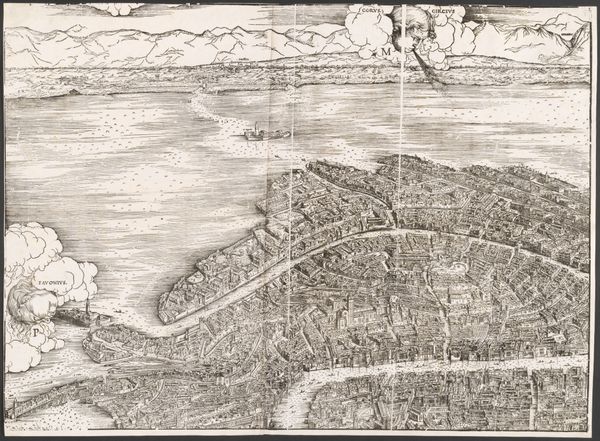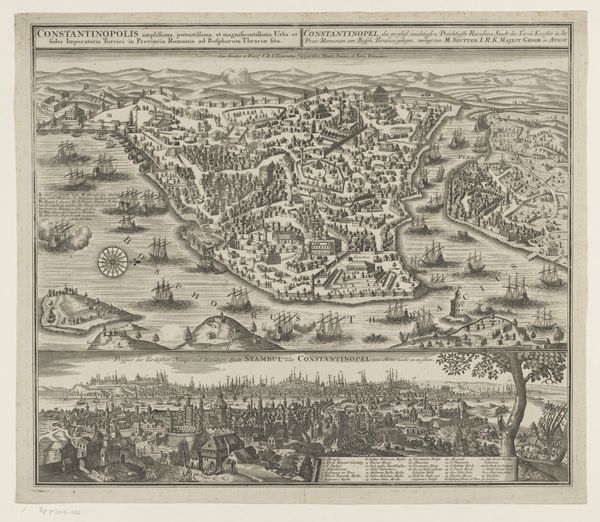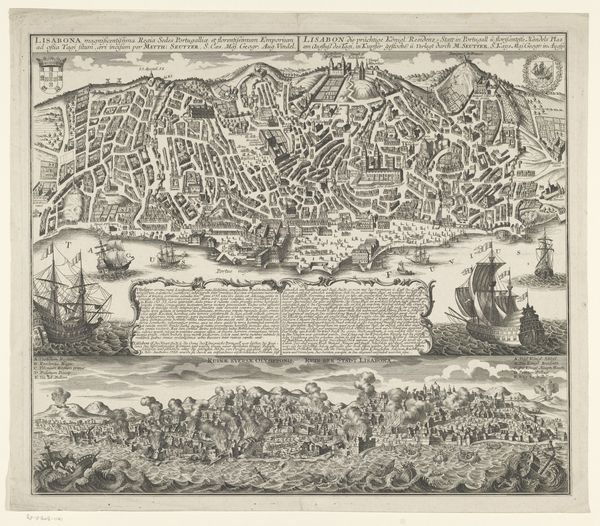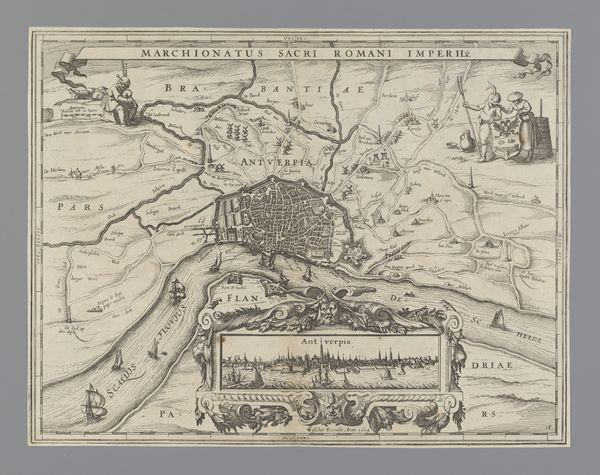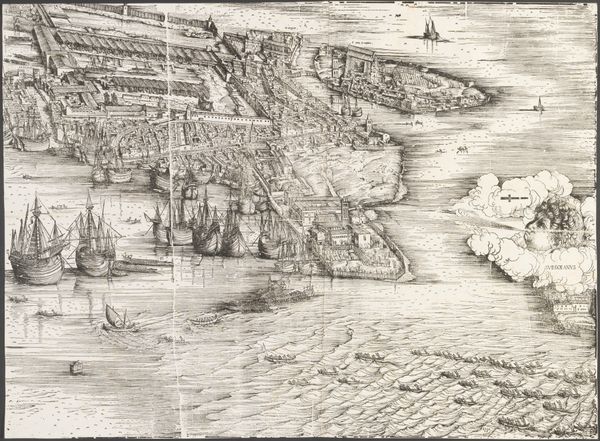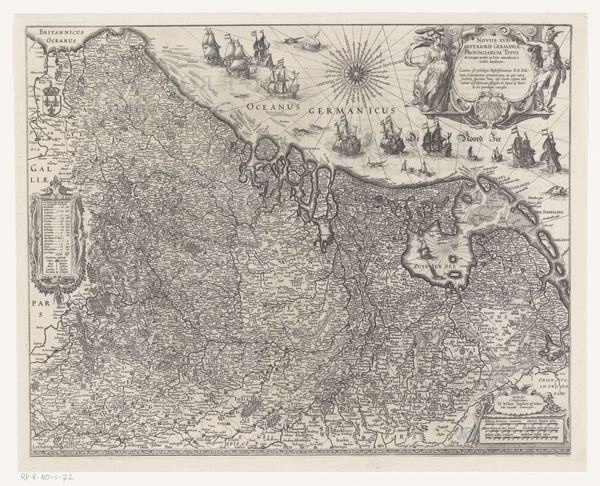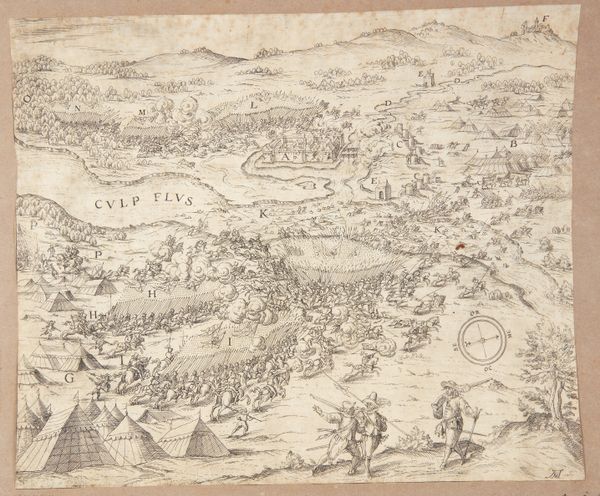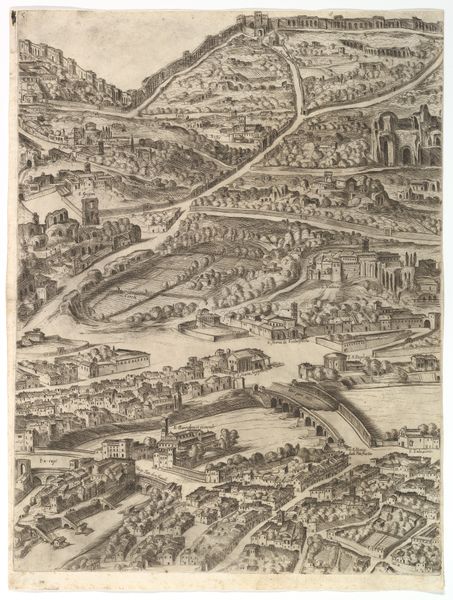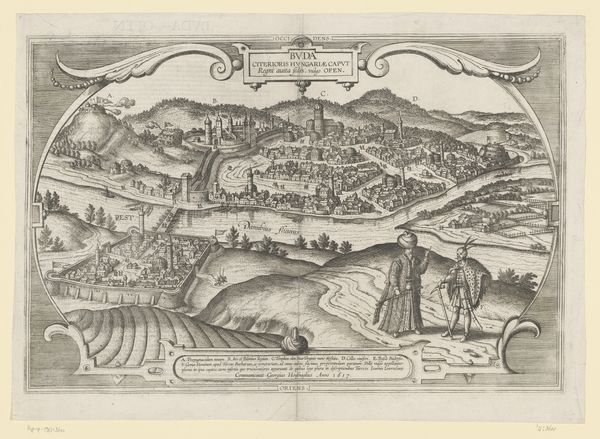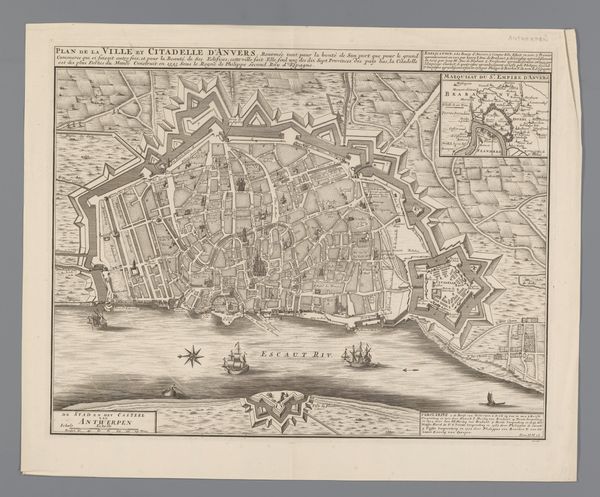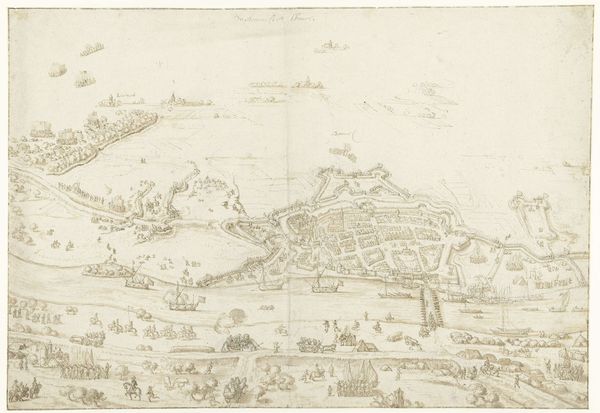
print, etching, woodcut, engraving
#
venetian-painting
#
ink painting
#
linocut
# print
#
etching
#
landscape
#
etching
#
carved into stone
#
linocut print
#
woodcut
#
cityscape
#
italian-renaissance
#
italy
#
engraving
Dimensions: 52 1/4 x 109 1/4 in. (132.72 x 277.5 cm) (sheet)60 3/8 x 118 1/8 in. (153.35 x 300.04 cm) (outer frame)
Copyright: Public Domain
Editor: This is Jacopo de' Barbari's "View of Venice" from 1500, an engraving and woodcut print. I'm struck by the level of detail. How do you even begin to interpret something so meticulously crafted? Curator: We have to think about the materials, and what their availability suggests. Look closely at the printmaking: the labor involved in creating the plates, the access to the metal itself. This wasn't just an artistic endeavor; it reflects Venice's commercial power. The ability to finance such a project and the infrastructure to distribute the prints are key. How do you think this image would have been circulated and consumed? Editor: Perhaps sold to wealthy merchants or used for official purposes, considering Venice's status as a major trade hub. Do you think the choice of a print, rather than a painting, influenced its accessibility? Curator: Absolutely. Printmaking allowed for mass production and dissemination, transforming art into a commodity, almost like propaganda. It wasn't just about aesthetics; it was about control, about crafting a visual identity for Venice as a powerful, sophisticated city-state. How might this map, in its detail and distribution, shape Venetian self-perception? Editor: I hadn't thought about it that way. I was so focused on the artistry. Now I see it's deeply tied to Venetian society and economics. The work required shows dedication to both art and propaganda. Curator: Precisely. It’s the fusion of art, craft, and commerce that makes it so fascinating.
Comments
minneapolisinstituteofart almost 2 years ago
⋮
Long before the advent of balloons and other aircraft, Jacopo de' Barbari created a bird's-eye view of Venice through the power of his intellect and imagination. The mural-size print was unprecedented in scale when it was published in the year 1500. Every building, canal, and open square is documented here. One imagines Barbari and his assistants climbing up the city's 103 bell towers in order to survey the dense urban landscape. The View of Venice also features the maritime activities that made the city an international center of trade. Mercury, the god of commerce, presides over the city, while watchful Neptune, god of the seas, rides his dolphin through the harbor. The incredible advance in the presentation and dissemination of information makes this the Google Earth of its day. The View is a landmark in the history of printmaking. It was printed in sections from six carved wooden blocks. Each part is so big that the individual sheets of paper were the largest ever produced in Europe at that time. When published, the View was very expensive, and most examples were probably displayed on walls. The result is that only a dozen of the original edition are known to survive. Mia's example, acquired in 2010, was the first to change hands in 55 years; it is one of just three in America and is in unusually good condition. Follow this link to see a high-resolution image of the Minneapolis View of Venice by Jacopo de' Barbari: http://gigapan.com/gigapans/166926
Join the conversation
Join millions of artists and users on Artera today and experience the ultimate creative platform.
